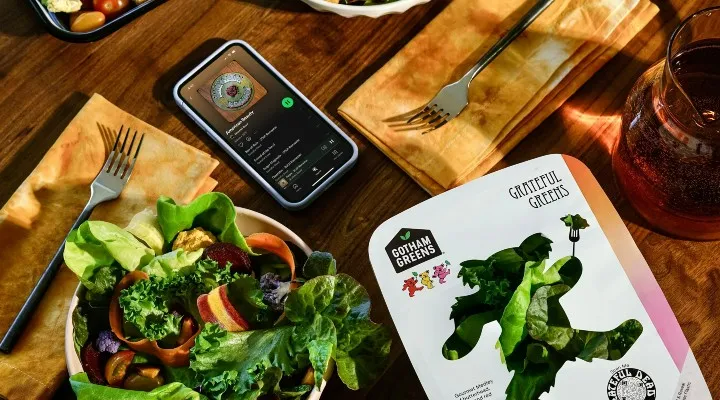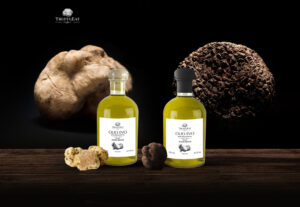
The scale of the global food waste problem is sobering. United Nations data has shown that if food waste were a country, it would be the third-largest emitter of greenhouse gases globally (8-10 per cent of global emissions). Worldwide, 811 million people are under-nourished, accounting for 45 per cent of deaths of children under 5 years old, the UN states. It also estimates that by saving just half of the food wasted each year, we could end world hunger. But all is not lost; there really are many reasons to be optimistic in the face of these facts. It may well take a village, but there are encouraging opportunities available to us all to drive change, reap benefits, and build a more socially responsible world.
The good news is that addressing the problem of food waste meets consumer expectations and offers businesses many benefits. Capgemini’s recent report, Reflect. Rethink. Reconsider: Why Food Waste is Everybody’s Problem, found that as much as 40 per cent of global food production is being wasted, and today’s consumers are increasingly motivated to address this issue head-on. Among consumers, 72 per cent have become more conscious about their levels of food wastage and are looking to organisations to take joint responsibility to lower wastage. Our research finds a strong connection between business benefits and food-waste saving initiatives, “including cost savings, increased revenue, new revenue streams, better ESG ratings, as well as higher consumer confidence”.
Take it on together
As we all well know, food is produced, ordered, distributed, packaged, portioned, delivered, consumed, and disposed of across an ecosystem and in various ways. No single entity can predict supply, demand, or consumption. Retailers are starting to collaborate across the value chain and use data and technology solutions, including demand-driven forecasting, temperature monitoring and inventory management. They are building visible, agile, intelligent supply chains with data-sharing ecosystems in place and working in partnership with suppliers and users to accelerate progress. While some of this can be driven by retailers and packaged goods companies, start-ups and a very different ecosystem also offer opportunities to accelerate innovation.
Who would have imagined social media would present an opportunity to behave differently, but lo and behold, in 2022 it most certainly does. A big challenge for retailers and consumer goods companies is that once consumers leave their captive channels, there is limited visibility on where they are transacting and what is influencing the buying decision. Still, by integrating third-party data, this picture can be enriched to inform decision-making. Recently, a viral TikTok feta pasta recipe caused a world shortage of feta and what the New York Times referred to as the “TikTok Feta Effect”. Retailers sold out of their stocked feta and had to dip into their reserve stock.
In this instance, social listening and corresponding demand mapping could have helped producers and retailers get ahead of the trend, plan surge capacity, and avoid a situation where supply is ramped up too late, leading to a glut of stock.
Start up, scale up
Scaling the innovation within start-ups is one way established businesses are accelerating their waste-reduction efforts and heralding some great benefits to consumers in the process.
Take the rise of urban farming. In London, Growing Underground uses discontinued subway lines to grow herbs and vegetables that are stocked in local Tesco, Whole Foods and M&S stores, allowing produce to go from farm to fork in less than four hours. Gotham Greens, in the US, blazes a similar trail, with greenhouses in urban landscapes across the northeast, Mid-Atlantic, Midwest, New England and beyond, to grow produce and deliver it fresh to urban retailers less than a day’s drive away. This farming method allows Gotham Greens to use 95 per cent less water and 97 per cent less land than traditional farms for the same output, while also consuming less energy, and limiting food-kilometres and waste.
Start-ups are using AI and location-based monitoring to optimise food distribution and consumption with simple solutions, and scale quickly. UK app Olio launched in 2015 with the humble aim of helping users give away unwanted food for free. Local food businesses such as restaurants quickly saw its potential and began to use it to give away excess food sustainably. Last year, Tesco added 27,000 UK stores onto the platform to redistribute surplus food nearing its ‘use by’ date. As of September 2021, the app has helped users share 25 million portions of food (the equivalent to 121 million car-kilometres taken off the road, TechCrunch states) and half of all food is requested within 21 minutes of posting.
With a $43 million seed round in 2021, Olio intends to expand its Food Waste Heroes program, an enterprise solution between food businesses and restaurants to reduce waste and cut environmental impact and carbon emissions. This success is a credit to its founders and early adopters, as well as major retailer Tesco for jumping onboard and accelerating its impact.
Start-ups such as Wasteless use AI to price food dynamically, based on its remaining shelf life, and Flashfood helps consumers find and save on fresh food items that are nearing their ‘best before’ dates.
Packaging: think inside the box
Only 19 per cent of organisations have scaled deployment of innovative packaging, leaving an abundance of value to be gained. Take Caulibox, a UK-based start-up bringing reusable packaging to the restaurant meal delivery category and making it simple and convenient. Consumers can order meals from participating vendors, which supply the meal in reusable Cauliboxes. Once used; the box can be returned to a drop-off spot or Caulibox can pick it up. Not only does it help keep food warmer for longer, but Caulibox can also quantify what it has kept from entering landfill, along with the amount of water consumption, mineral waste, and carbon emissions avoided from the use of its products.
Incubating innovation
Among consumers, 62 per cent want businesses to do more to help reduce food waste, while 58 per cent intend to increase their spending with brands taking active steps to reduce waste. International snack food company Mondelez provides an encouraging example of how this can be achieved, by inviting ‘open source’ innovation into its ecosystem.
Through its innovation hub, SnackFutures, the company has developed CoLab, a program to invite start-ups to collaborate with Mondelez to develop more sustainable snacks. This involves a formal 12-week program that invites “mission-driven snack brands to apply for (a) …program that includes a curriculum of mentoring, workshops, access to leadership, and partners.”
The initiative has generated a growing portfolio of snack brands, including CaPao and DirtKitchen. CaPao turns the 70 per cent of cacao fruit discarded in the chocolate-making process into a healthy, plant-based snack. DirtKitchen uses vegetables that are ‘unsellable’ – due to undesirable shapes, supply gluts, or items being too ripe for retail – and turns them into air-fried vegetable crisps.
This year, Mondelez has selected 10 start-ups to work with, chosen “for their positive impact on the world and alignment with SnackFutures’ mission of creating a snacking world that is good for people, kind to the planet and deliciously fun”.
Small ideas + big data
But it is not only technology solutions that will help; targeted shifts in the moments that matter are equally important.
We all know the dreaded feeling of looking in the fridge and despairing at what to make with what’s left. Unilever’s Hellmann’s Mayonnaise has leaned into this problem by offering ‘flexipes’ – recipes that focus on the food that most frequently goes to waste and showing how it can be turned into delicious meals – aided by their mayonnaise of course. In Australia, Coles and Woolworths offer recipes, inspiration, and tips to limit food waste on their websites.
It’s not hard to imagine how these individual efforts could be accelerated by integrating the data retailers have on consumer purchases and product shelf life. In time, the data would be enriched by smart appliances that could see what’s left and make suggestions accordingly. These examples show a careful balance of helping and educating engaged consumers without laying the problems of food waste solely on their shoulders.
Certainly, there is no ‘one size fits all’ approach to the problem of food waste. But thankfully, we have a stronger arsenal than ever before. We can harness data, technology, innovation, changing consumer attitudes, and collaboration across ecosystems to drastically reduce food waste and overcome its high financial, human, and environmental costs. In doing so, we have the opportunity to make businesses more resilient, while working to make the world more sustainable. That, to me, seems like a wicked problem worth solving.
The post Why brands are developing an appetite for cutting food waste appeared first on Inside Retail.

